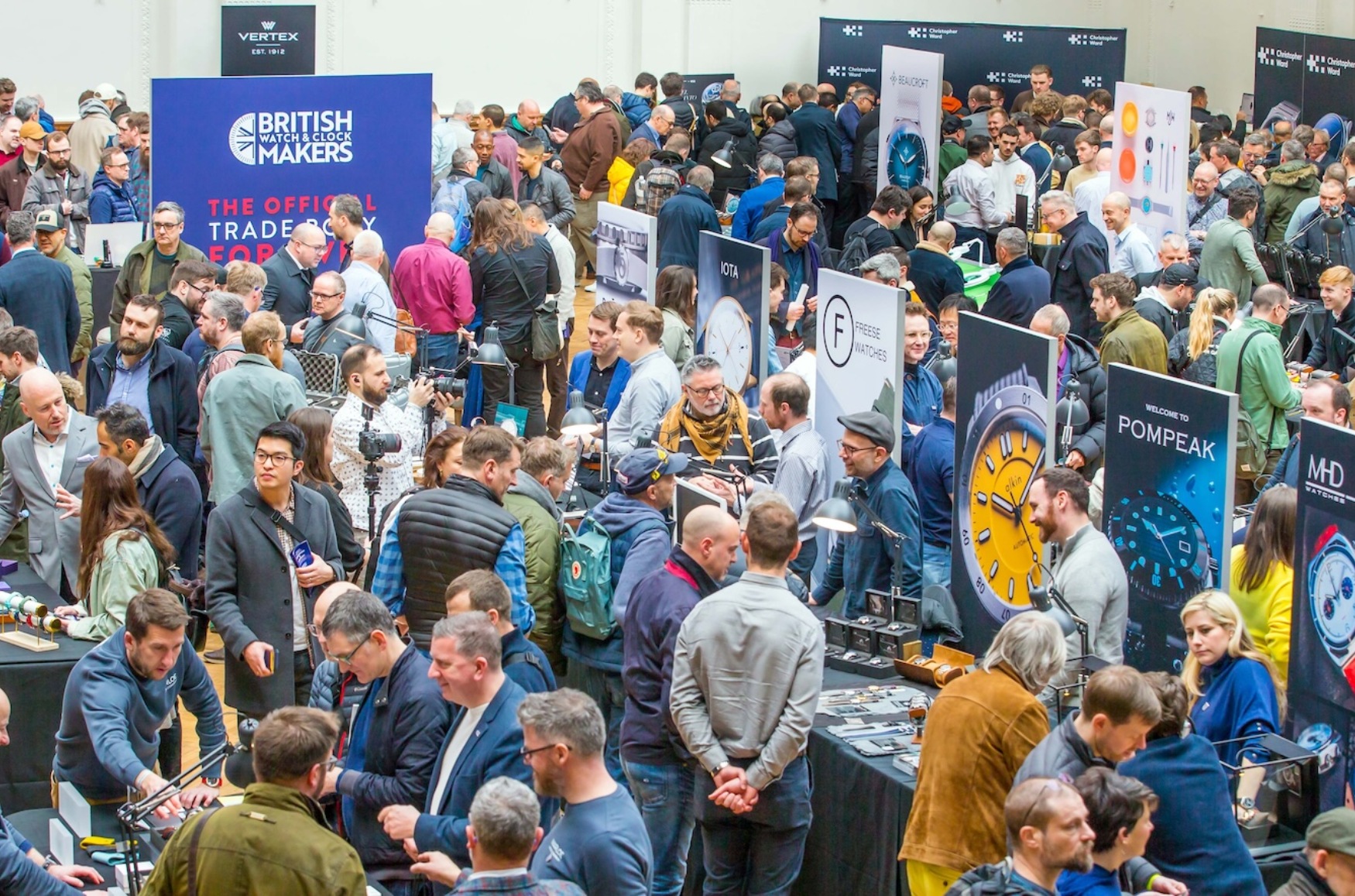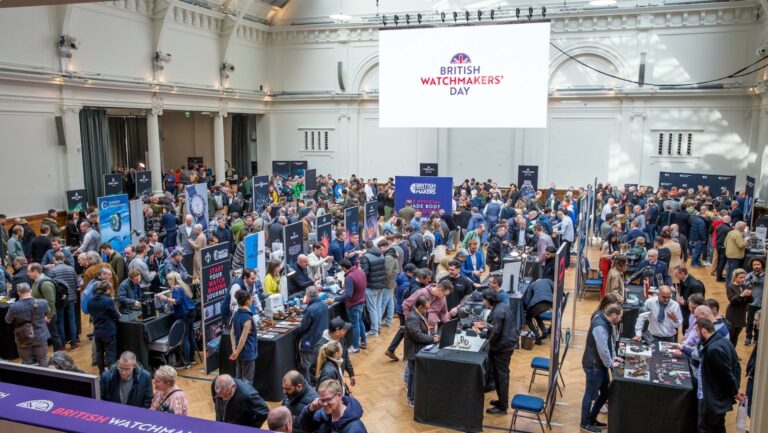Russell Sheldrake
This article originally appeared in Issue 9 of NOW magazine, released earlier this year, and is currently available for purchase in both print and digital versions from our online store.
We feel very lucky to be in the UK right now. A wave of optimism and energy is driving the watch industry forward, and while the top end of the market continues to hold its own, young brands are emerging. Nowhere was this more evident than on British Watch Makers Day on March 9th. On this day, 43 brands came together in a show of collaboration and intent.

But it hasn’t always been a sunny day for the industry. For a long time, it was thought that Britain did not have a watch industry. We had Roger Smith and Bremont, and we thought, well, that’s it. But now, with support from the British Watch and Watch Manufacturers Association (BWCMA), the sector is receiving even more attention. Combined with the surge in interest in watches since the pandemic, the perfect storm of conditions is brewing for this small but passionate industry to emerge.
While it seems appropriate to begin this investigation by focusing on the BWCMA, it is worth noting that there are still brands to discover beyond the association’s 105 members. Founded in 2020 by Roger Smith, Mike France and Alistair Owsley, the BWCMA is the first trade association for the modern British watchmaking industry. “Since Smiths closed in the 70s, we have lost all the knowledge needed to manufacture watches on a large scale here in the UK,” Owsley says. Losses for such a large manufacturing company cannot be easily compensated for. But the bigger question here is whether the capabilities Smith gave the department are still needed today.


Mr Owsley and Fears Watch Company owner Nicholas Bowman-Scargill both raised the question of whether high-end manufacturing needs to return to the UK in the short term. Bowman-Scargill said: “Not to sound too controversial here, but people care about ‘Made in Britain’ just as much as they care about sustainability. They say a lot about it, but at the end of the day, it doesn’t really matter.” Bowman-Scargill and Owsley similarly agree that the importance of “inside” has been over-hyped in the past. I agree. They believe that what really matters today is the level of transparency and differentiation.
Richard Benc, founder of Studio Underd0g, says that “the British market adds value through British design” and believes this is the main difference between British brands and the Swiss industrial giant. Masu. This is no surprise given the great British design figures from Jony Ive to Tom Dixon. Building on this heritage, it’s great to see brands like Studio Underd0g and Mr Jones Watches carving out their unique personalities in what is considered an incredibly crowded market. is. Especially since they achieved it in record time.


Nowadays, British brands not only stand out with their designs, but also have a wide variety of brands. Even Don Cochrane, owner of Vertex Watches, is dazzled by today’s sheer volume. “What always surprises me is how many watch brands there are, and how many of them have been launched in recent years.”
There is an interesting comparison between Cochrane’s “Vertex” and Bowman Scargill’s “Fears.” Both brands were founded by the ancestors of their current operators, with Vertex relaunched at similar times in 2015 and Fears in 2016, but both brands have an incredibly rich back catalog available. I was there. However, the two companies operate and market very differently. Fears has been sold in retail stores (including Discovery Studios in Melbourne and London) for many years, and the brand recently opened its first boutique in Bristol. Vertex has never appeared in retail stores before, but recently opened its first boutique in London’s Shepherd’s Market. The big difference between these two stores is that Fears has a lot of foot traffic passing through its Clifton Arcade space, while Vertex is tucked away in a side alley and you have to know it’s there to find it. is. Despite their different retail approaches, both seem to be thriving.


But why is this comparison important? It shows that brands founded at the same time and with very similar backgrounds can both find success in this field by pursuing different paths. I am. There is no one-size-fits-all approach to growing a British watch brand. Let’s take Bremont as another example. They have been the biggest and most recognizable brand in the UK market for many years, and despite the controversial rebrand announced at Watches & Wonders, they are pushing ahead with expansion plans. CEO Davide Cerrato has confirmed that he is already setting his sights on international growth. “We’ve been in the US for 15 years and it still has the greatest growth potential for us. Next we’ll turn to the Middle East and India.”
Seeing Bremont’s current expansion by taking on investments and expanding into global markets, it’s easy to see how other brands will follow suit. Mr Owsley points out that Christopher Ward achieved sales of £30m last year, so it is not hard to imagine them following Bremont’s path to global expansion. Nevertheless, questions remain as to whether the message of such expansion would have as much impact as the quintessentially Britishness that its British brethren were selling.


However, recently there has been some backlash against this overtly British marketing method. Chris Hall, a journalist and writer for the newsletter Fourth Wheel, accused brands of “slapping the Union Jack” on their watches and thinking that was enough. But young and energetic brands are entering the space, pushing British design sensibilities without making them something you can buy in a souvenir shop outside Buckingham Palace. I think this is partly because the brand is based outside of the capital.
There’s Fears in Bristol, Studio Underd0g in Brighton, Garrick in Norfolk, anOrdain in Glasgow and of course Roger Smith on the Isle of Man. The national expansion of this industry is creating more and more opportunities for those wishing to enter this field. That too is desperately needed. “There is a huge shortage of people coming into this field,” Owsley admits. “We are currently developing a Career Hub, a one-stop shop for those entering the industry at all levels.”

There are currently two major sources of information flowing into the industry. One is the British School of Watchmaking, which offers 1800-hour and 3000-hour Swiss Watchmaker Training and Education Program courses in Stockport, while Birmingham City University offers its own Bachelor of Horology course. However, this still feels like a major weakness. If we are to grow and meet the BWCMA’s target of £1 billion retail market value for this sector, we will need to significantly increase our entry points.
The country already has a richly established engineering industry, from automotive to consumer goods, so pivoting to watchmaking seems like an easy step. But we don’t just need watchmakers, argues Owsley. “We also need marketers, designers, and all the other professions that surround the industry.” Until the sector’s reputation grows to the point where it’s considered a stable and growing industry, filling these gaps may not be so easy. I don’t know.

Although entry into the professional side of the industry still feels nascent, the collector and enthusiast community here in the UK seems stronger than ever. One of the main takeaways from British Watchmaker’s Day was how many people took part and were willing to queue to get in. Whether it was buying your own pizza watch, shaking Roger Smith’s hand or discovering some of the smaller brands, the level of enthusiasm was obvious as you looked through the exhibits.
These displays at public events may give you a feel for the industry. However, the best way to obtain quantitative data is still the BWCMA Bellwether report released in July 2021. Although this report painted a fairly positive picture of the industry at the time, I think it’s clear that the industry has steadily grown since then. Fortunately, Mr. Owsley told me that a new report has been prepared and is expected to be released later this year. It ultimately shows us whether the positive emotions we feel are reflected in concrete numbers.


Whatever the reports say, it’s certain that the UK watch industry is currently a fun and vibrant place. And from a young person who has spent his entire career working in it, it feels like the best is yet to come.
As mentioned above, this article originally appeared in issue 9 of NOW magazine, which can be purchased in print or digital format here.
